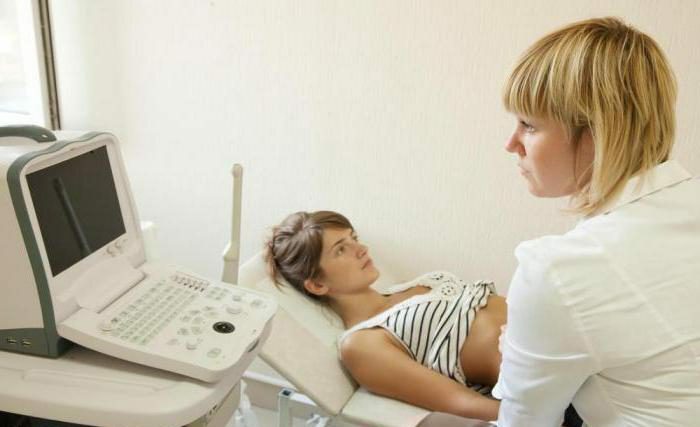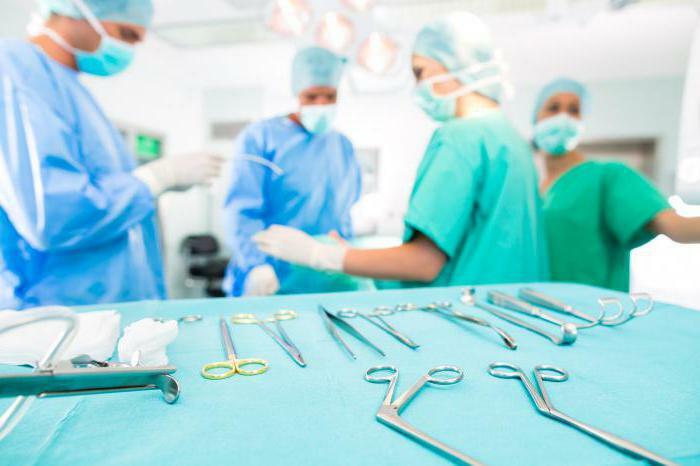Asherman's Syndrome: Causes, Symptoms, Description, Diagnosis and Treatment
Childlessness in marriage is one of the most important social problems. Scientists have proved the equal role of each of the potential parents in the unsuccessful solution of this issue. However, the child's bearing and delivery are borne by the mother's shoulders. To fulfill these tasks can only mature woman's body. In the past few years, there has been an increase in the diseases of the reproductive organs, which also provoke infertility. In our country, the leading position is chronic endometritis. One of its manifestations is Asherman's syndrome. Is pregnancy possible with this disease?
Description of the pathology of
Asherman syndrome is understood as a pathological condition, as a result of which adhesions are formed in the uterus. They lead to a partial or complete invasion of its cavity. The disease received its name by the name of the gynecologist Joseph Ascherman. The syndrome was first described in detail in 1894 by Henry Fritsch. In the medical literature there are several names of this pathology: intrauterine synechia, traumatic atrophy and sclerosis of the endometrium.

Asherman's syndrome is diagnosed in women regardless of their age and social status. Intrauterine synechiae are connective tissue fusion, which together solder the walls of the organ and cause their deformation. As a result of the pathological process, a variety of disorders develop that lead to disruption of menstrual functions. The main symptoms of the syndrome are expressed in the form of spontaneous abortions and infertility.
What does statistics say about the spread of this disease? After curettage in women giving birth, the risk of developing the syndrome is 25%.With a frozen pregnancy, the likelihood of adhesions increases and amounts to 30% of cases. An ordinary miscarriage practically does not threaten the health of a woman. In this case, the risk of the disease barely exceeds 7%.
The main causes of
The uterus is a hollow muscular organ. Outdoors, it is covered with a peritoneum. From the inside is lined with endometrium, which consists of two layers - functional and basal. Depending on the phase of the menstrual cycle and under the influence of sex hormones, the endometrium undergoes cyclic changes. Closer by the time of ovulation, when the likelihood of conception is highest, the uterine mucosa thickens. In the elements of the endometrium, active production of biologically active substances takes place. After fertilization of the egg, it enters the uterus, where implantation takes place. Contact of embryo membranes with healthy endometrium is the main condition for successful conception. If fertilization has not occurred, the functional layer is rejected, as evidenced by the monthly. With the beginning of each cycle, the endometrium grows anew.
Synechia are outgrowths or adhesions of the inner layer of the uterus, which disrupt the physiology of the mucous membrane. Asherman's syndrome develops as a result of injury or trauma to the basal layer of the endometrium during gynecological procedures. This can be scraping after an abortion, a cesarean section or any other surgery. Another common cause of the disease is endometritis. Synechia are formed against the background of numerous foci of inflammation on the uterine mucosa. 
The clinical picture of the syndrome
Symptoms of the disease are caused by the adhesive process and its effect on the reproductive system. Among them, the most common are the following:
- disorder of menstrual function( abundant / sparse discharge, severe pain syndrome);
- miscarriage;
- decrease in the number and duration of menstruation;
- secondary infertility;
- accumulation of blood in the uterine cavity.
What other symptoms does Asherman have? The disease is often accompanied by endometriosis of varying severity. Pathology is characterized by ectopic growth of the functional layer of the endometrium that extends beyond the uterine cavity. This combination negatively affects the prognosis and prospects for treatment. 
Three degrees of severity of
Given the damage to the basal layer of the endometrium, physicians suggest the following classification of the Asherman syndrome:
- mild degree( adhesions take up no more than 25% of the uterine volume, easily break down with mechanical damage);
- medium degree( fusions tightly welded to the uterine mucosa);
- severe( spikes consist mainly of sclerotized connective tissue, block the mouth of the uterine tubes and the bottom of the organ).
Timely determination of the degree of pathological process allows to quickly cure Asherman's syndrome.
Is pregnancy possible?
Reviews of doctors suggest that the probability of conceiving a child with this disease depends on its causes and stage. With Asherman's syndrome, the reproductive system is severely affected. The walls of the uterus stick together, breaking the patency of the pipes. As a result, the embryo can not be implanted. In addition, the endometrium loses its ability to respond to changes in estrogen indicators. Gradually develops secondary infertility, and with it amenorrhea. Spikes in the cervical region provoke congestion and delay in menstrual flow. Disruption of the cycle usually indicates a severe degree of pathology. Pregnancy is natural if it is possible to cure Asherman's syndrome in a timely manner.
Is it possible to ECO?The medical reports confirm that in vitro fertilization makes sense when the disease is at the initial stage of development. In this case, the number of adhesions can not exceed 25% of the volume of the uterus, they must be localized in a limited area of the cavity.
It is impossible to give a single answer to the questions presented, because each case is individual. Depending on the severity of the pathological process, there are several options for the course of pregnancy. In some women, bearing does not cause accompanying problems, while in others it is accompanied by numerous complications. Possible and the third option - spontaneous abortions, miscarriages, secondary infertility. That is why every woman should monitor her health, periodically undergo examinations with a gynecologist, and timely treat all diseases. 
Medical examination
For the diagnosis of the disease, instrumental methods are used to visualize the uterine cavity. On a mandatory basis, the doctor examines the obstetric history of the patient( number of pregnancies, abortions, miscarriages, etc.).Ultrasound is considered the most accessible and at the same time a minimally invasive method for diagnosing pelvic organs. Asherman's syndrome on ultrasound can be confirmed, but to obtain accurate results it is necessary to repeat the procedure several times during the cycle.
A gold standard for identifying synechia is hysteroscopy. Such a study of the uterine cavity implies the use of a special device. It is injected through the cervical channel, so that the condition of the organ can be assessed in real time on the computer screen. Hysteroscopy allows you to determine the severity of the pathological process, the size and location of adhesions. The results of a complete examination of the patient should be combined with an obstetric anamnesis and previous attempts at treatment. This approach allows predicting the positive dynamics of therapy. 
Treatment methods
The disease of mild to moderate severity is treatable. Launched forms of pathology and pregnancy are incompatible. In this case, surrogate motherhood comes to the rescue. When the adhesions are localized in a limited area of the uterine cavity, the IVF method helps. However, in this case, not all women with the diagnosis "Asherman's syndrome" can try on the role of mother.
Treatment involves the removal of adhesions by the method of hysteroscopy. The operation does not require general anesthesia, no complications. Technically, this is a rather complicated procedure. Removal of the synechia is carried out with micro-scissors because of the high probability of re-injury. In the postoperative period, antibiotic treatment is prescribed to prevent infectious complications. Drug therapy must be supplemented with hormonal therapy. The use of estrogens and progestins is indicated to stimulate the growth of the endometrium. 
Forecast
With mild degree of pathological process and timely treatment, pregnancy is observed in 93% of patients, with an average - only in 78%.The competent treatment of women with advanced form of the disease makes it possible to conceive a baby in 57% of cases. However, successful pregnancy with Asherman's syndrome does not guarantee the birth of a child without pathologies. The age of the patients is also taken into account in the prognosis. For example, 66% of patients younger than 35 years with diagnosed severe syndrome are capable of conceiving. In women over 35 years of age this figure barely exceeds 24%.
Preventive measures
Is it possible to prevent Asherman's syndrome? Scraping or vacuum aspiration - these two procedures the specialist performs almost blindly, relying only on his own experience. Endometrial tissue during pregnancy is mild, so it is easily traumatized. As a result, any diagnostic or therapeutic curettage is always accompanied by a trauma to the basal layer.
An alternative to these procedures for miscarriage is medical abortion. It implies the stimulation of labor through the use of medicines. However, the effectiveness of this method is only 80%.In 10% of cases after medical abortion, infection of the membranes is observed, which requires scraping. Thus, to prevent Asherman's syndrome is possible, if for medical reasons to choose a medical abortion. On the other hand, this procedure does not give a 100% guarantee of a positive result.
